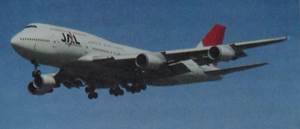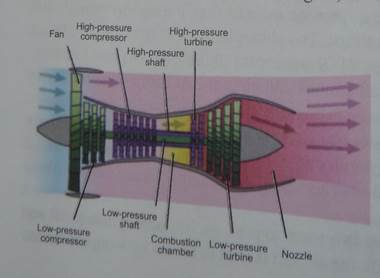V. Be ready to talk and discuss the principle design of car's body
ADDITIONAL MATERIALS:
Motor oil
Engines need oil that is thin enough for cold starts, and thick enough when the
engine is hot. Since oil gets thinner when heated, and thicker when cooled, most of us use what are called multi-grade, or multi-viscosity oils. These oils meet SAE specifications for the low temperature requirements of light oil and the high temperature requirements of heavy oil. You will hear them referred to as multi-viscosity, all-season and all-weather oils. Oils meeting the SAE's low temperature requirements have a «W» after the viscosity rating (example: 10W), and oils that meet the high ratings have no letter (example SAE 30). Oil is rated for viscosity by heating it to a specified temperature, and then allowing it to flow out of a specifically sized hole. Its viscosity rating is determined by the length of time it takes to flow out of the hole. If it flows quickly, it gets a low rating. If it flows slowly, it gets a high rating.
Sedan
The 4-door sedan's three-box configuration continues to appeal to folks who more comfortable with familiar forms. This is especially true in the executive class] where longer overall car lengths benefit from the sedan's balanced look. It also appe to car owners who prefer to have the cargo area completely sealed and out of vieiT separate compartment. Smaller cars are less practical as sedans and benefit from hatch- back or wagon configurations.
Station Wagon:
Long a favorite of drivers who needed more cargo capacity, the wagon has decline in popularity, due to the versatility of minivans and SUVs. Nevertheless it's a good choice for buyers who prefer sedan-like handling and accommodation. With the rear seat folded flat, the station wagon can handle everything from a sheet of plywood to an antique hutch. With the seat up, it performs like a sedan. The wagon has been making a comeback lately, especially in European models.
Sport Utility Vehicle (SUV):
More utilitarian than sport, the SUV's popularity is due to a number of factors including a «command» seating position, spacious cargo capacity, and the availability of four-wheel-drive. Highly recommended for those who must drive through snow, mud and sand and, of course, for participants in the off-roading hobby. Some SUVs tend to be gas-guzzlers and have a reputation for rolling over in accident situations.
Hatchback:
Arguably the most sensible passenger car yet devised. A sedan with a lifting rear door where the trunk would be, it allows for the carrying of large items when the back seat is not in use. The smaller the car, the more you need one because of the hatch's ability to look, drive, and feel like a sedan while carrying all sorts of odd-shaped cargo. With lifestyles demanding more versatility, the hatchback concept is enjoying a rise in popularity.
Minivan:
It's been said the minivan is the station wagon for today's families; at least large ones.
A minivan can transport up to eight passengers in three-row seating and still leave room for cargo. Rear seats that fold flat into the floor create an immense amount of room. Parents like the walk-through space between the front seats. Kids like the way video screens^ provide on-the-go entertainment. Minivans drive more like a car than an SUV does, and
the only people who refuse to be seen in one are image-conscious young men.
Coupe:
If you subscribe to the «door for every seat» theory a coupe is not for you. Basically, a coupe is nothing more than a 2-door sedan but its appeal lies in the sporty look. That image will cost you more, though coupes actually cost less to manufacture. Getting in and out of the rear seat is a pain. In spite of all these negatives, coupes remain рорular because there's more to driving than just transportation and a coupe says something| about its owner. Four-door coupes are the hot new thing, but are they really coupes?
Convertible:
If a coupe is not the most practical conveyance, a convertible is even less so. Rear u seats are often more cramped than a coupe's and the trunk is inevitably smaller due to the space needed for a folding top. And you will definitely pay a premium for the privilege. Yet, for all its inconveniences, driving with the top down, especially on а warm spring day, makes the convertible worth every penny. The feeling is glorious, the all-round visibility wonderful. Good for the soul.
Sports Car:
In the beginning they were all sports cars, for you had to be a sport just to drive one of those early automobiles. Later, the sports car became a vehicle built solely for the fun of driving, often quickly, and has remained so to this day. A true sports car puts handling steering, braking, and agility first, passenger comfort and convenience second. In most cases it will have only two seats, as size and weight are the enemies of performance.
Crossover:
«Crossover» is just one term manufacturers are coming as they attempt to name a new breed of vehicle that combines the virtues of several categories. Take a sedan, for example, and mix in equal parts of SUV, station wagon, and minivan, and you get a crossover. They come in all sizes and a variety of shapes as designers continue to experiment, but one thing you can be sure of: The crossover/sports-wagon/MP V/APV/mono-space vehicle is here to stay. Sorry, there's no prize for inventing a name that actually makes sense.
LESSON # 3
AIRCRAFT
Boeing 747-400. This is a wide-bodied long-haul aircraft. An aircraft is any machine capable of atmospheric
Flight.

Aircraft fall into two broad categories:
Heavier than air
Heavier than air aerodynes, including autogyros, helicopters and variants, and conventional fixed-wing aircraft (airplanes or aeroplanes). Fixed-wing aircraft generally use an internal-combustion engine in the form of a piston engine (with a propeller) |or a turbine engine Get or turboprop), to provide thrust that moves the craft forward through the air. The movement of air over the airfoil produces lift that causes the aircraft to fly. Exceptions include gliders which have no engines and gain their thrust, initially, from winches or gliders and then from gravity and thermal currents. For a glider to maintain its forward speed it must descend in relation to the air (but not necessarily in relation to the ground). Helicopters and autogyros use a spinning rotor (a rotary wing) to provide lift helicopters also use the rotor to provide thrust. The abbreviation VTOL is applied to aircraft that can take off and land vertically. STOL stands for Short Take Off and Landing.
Lighter than air aerostats: hot air balloons and airships. Aerostats use buoyancy to float in the air in much the same manner as ships float on the water. In particular, these aircraft use a relatively low density gas such as helium, hydrogen or heated air. The distinction between a balloon and an airship is that an airship has some means of controlling both its forward motion and steering itself, while balloons are carried along with the wind.
In heavier-than-air aircraft, there are two ways to produce lift: aerodynamic lift and engine lift. In the case of aerodynamic lift, the aircraft is kept in the air by wings or rotors. With engine lift, the aircraft defeats gravity by use of vertical thrust. Examples of engine lift aircraft are rockets, and VTOL aircraft such as the Hawker-Siddeley (HS) Harrier.
In a "conventional" configuration, the lift surfaces are placed in front of a control surface or tailplane. The other configuration is the canard where small horizontal control surfaces are placed forward of the wings, near the nose of the aircraft. Canards are becoming more common as supersonic aerodynamics grows more mature and because the forward surface contributes lift during straight-and-level flight.
A second category of aerodynamically lifted aircraft are the rotary-wing aircraft. Here, the lift is provided by rotating aerofoils or rotors. The best-known examples are the helicopter, the autogyro and the tiltrotor aircraft (such as the V-22 Osprey).
A further category might encompass the wing-in-ground-effect types, for example the Russian ekranoplan also nicknamed the "Caspian Sea Monster" and hovercraft; most of the latter employinga skirt and achieving limited ground or water clearance to reduce friction and achieve speeds above those achieved by boats of similar weight.
A recent innovation is a completely new class of aircraft, the fan wing. This uses a fixed wing with a forced airflow produced by cylindrical fans mounted above. It is (2005) in development in the United Kingdom.
Until World War II, the internal combustion piston engine was virtually the only type of propulsion used for powered aircraft. The piston engine is still used in the majority of aircraft produced, since it is efficient at the lower altitudes used by small aircraft but the radial engine (with the cylinders arranged in a circle around the crankshaft) has largely given way to the horizontally-opposed engine (with the cylinders lined up on two sides of the crankshaft). Water cooled V engines, as used in automobiles, were common in high speed aircraft, until they were replaced by jet and turbine power. Piston engine typically operate using avgas or regular gasoline, though some new ones are being designed to operate on diesel or jet fuel. Piston engines normally become less efficient above 7,000-8,000 ft (2100-2400 m) above sea level because there is less oxygen available for combustion; to solve that problem, some piston engines have mechanically powered compressors (blowers) or turbine-powered turbochargers or turbonormalizers that compress the air before feeding it into the engine; these piston engines can often operate efficiently at 20,000 ft (6100 m) above sea level or higher, altitudes that require the use of supplemental

oxygen or cabin pressurization. Ppressurised aircraft,however, are more likely to use the turbine
engine, since it is naturally efficient at higher altitudes and can operate above 40,000 ft. Helicopters also typically use turbine engines. In addition to turbine engines like the turboprop and turbojet, other types of high-altitude, high- performance engines have included the ramjet and the pulse jet. Rocket. aircraft have occasionally been experimented with. They are restricted to rather specialised niches, such as spaceflight, Where no oxygen is available for combustion (rockets carry their own oxygen.
